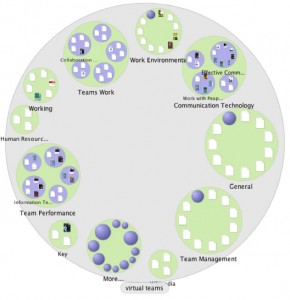THE ROLE OF CITATION IN INNOVATION
/The Role of Citation in Innovation
This post is motivated by the pain sometimes evidenced by my students when I push for references for the ideas they present in their own work. I tell them that citation is important because of the University’s Integrity Policy, because acknowledging intellectual property is important, and to help them be able to use the source in the future. Still, many find providing references, and especially references in text (author, year), burdensome to do and distracting to read. I, on the other hand, find it annoying to read work where I can’t clearly see the back tracking of ideas. I want to know what is behind a statement and I want to be able to have a hint of this in the text itself. (Being able to mouse-over a link provides a similar capability.)
I’m working from the belief that innovation is often “..a process of taking apart and reassembling [extant] elements in new combinations" (Hargadon, 2003 - summary). We limit our opportunities to innovate if we limit our access to the original elements.
I also strongly resonate with the following: "If I have seen further, it is by standing on the shoulders of giants" -- often attributed to Sir Isaac Newton, but actually goes back much further. See Aerospaceweb.org's interesting review. Web-enabled tools allow us instant access to supporting materials via links (such as those I’m using here harkening back to HyperCard) and the more recently popular visualization tools such as:
For example, here is the result of a Grokker search on “virtual teams” [Sadly, Grokker has shut its doors. Some alternatives as of 2012.]
Modern tools allow easier connection and visualization to our background knowledge. We are still in the early stages and the process is not seamless – but the value of providing credit where credit is due and the ability assess the source of knowledge is clear. For more information on visualization, see Klavans and Boyack’s (2005) article on visualizing the relationships between bibliographic references. Abstract Full Article








